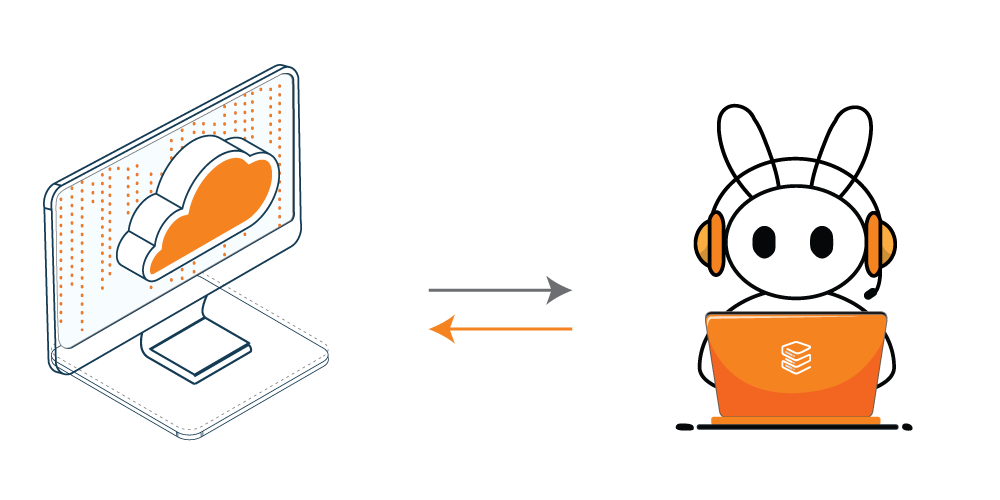Docker containers have become the standard for packaging and deploying applications. The reason is simple. It makes it easier to maintain consistency across different environments. When building a Docker image, two crucial instructions often come into play: ENTRYPOINT and CMD. These instructions define how a container should behave when it’s run. In this detailed blog, we will do a Docker ENTRYPOINT vs CMD comparison. It will help you understand their differences, and explore best practices for their usage.
You can simply skip getting into the complexity of Docker ENTRYPOINT vs CMD by opting for our Docker Consulting Services. Our experts will take care of your Docker operations while you focus on your core business.
Table of Contents
Docker ENTRYPOINT vs CMD
Before diving into the details of Docker ENTRYPOINT vs CMD, let’s establish some context.
In a Dockerfile, you can define a series of instructions that describe how to create a Docker image. These instructions include things like installing packages, copying files, and configuring the environment. However, when it comes to defining the command that should be run when a container starts, two instructions take the spotlight: ENTRYPOINT and CMD.
What is ENTRYPOINT?
The ENTRYPOINT defines the command that will be executed when the container starts. It is often used for specifying the main executable for the container.
Using ENTRYPOINT for Executable Containers
Here’s an example of using ENTRYPOINT:

In this example, the echo command is set as the entry point. When you run a container from this image, it will always execute the echo command with the specified arguments.
Overriding ENTRYPOINT
You can override the ENTRYPOINT command by providing a new command as arguments when running the container:

This will execute echo “Hello, Overridden!” instead of the original ENTRYPOINT.
Also Read: Our blog post on docker port mapping
What is CMD?
The CMD command indicates the initial command to be executed by the container. It’s typically used for defining the main purpose of the container.
Using CMD for Default Commands
Here’s an example of using CMD:

In this case, the echo command is set as the default command. If you run a container from this image without specifying a command, it will run the echo command with the provided arguments.
Overriding CMD
You can also override the CMD command by providing a new command when running the container:

This will execute echo “Hello, Overridden!” instead of the original CMD.
When to Use ENTRYPOINT or CMD
Knowing when to use Docker ENTRYPOINT or CMD can sometimes be a bit tricky, but here are some general guidelines:
- Use ENTRYPOINT when: You want to define a fixed entry point or when you want to provide an executable command that should not be easily overridden.
- Use CMD when: You want to provide default arguments for a command or when you expect users of your image to easily override the command.
- Combine them when: You want to provide default arguments but also allow users to override the entire command if needed.
Also Check: Our blog post on check docker version
ENTRYPOINT & CMD Best Practices
To make the best use of Docker ENTRYPOINT and CMD, consider the following best practices:
- Use CMD for defining the default behaviour of the container.
- Use ENTRYPOINT for defining the main executable of the container.
- Use an ENTRYPOINT script for more complex setups to handle signal handling, environment variable processing, etc.
- Use CMD for arguments that are likely to change frequently.
- Document your Dockerfile to make it clear how your images are meant to be used.
Examples
Here are a few examples to illustrate the use of ENTRYPOINT and CMD:
Example 1: Using ENTRYPOINT for an Executable Container

Example 2: Using CMD for Default Arguments

Example 3: Combining ENTRYPOINT and CMD

Conclusion
Understanding the difference between Docker ENTRYPOINT and CMD is important for creating Docker images. By using these instructions the right way, you can create images that are not only functional but also adaptable to various use cases. Remember to document your Dockerfiles and follow best practices to ensure that your containers are easy to use and maintain.
FAQs
What is the difference between ENTRYPOINT and CMD in docker?
ENTRYPOINT specifies the command to run when a container starts, while CMD provides default arguments for that command.
Why do we use ENTRYPOINT in docker?
ENTRYPOINT is used to define the main executable for a container, ensuring a specific command is always run when the container starts.
What is the difference between CMD and ENTRYPOINT precedence?
When both are present, CMD provides default arguments to the command specified by ENTRYPOINT. However, CMD can be overridden when running the container
Can I have both CMD and ENTRYPOINT?
Yes, you can have both CMD and ENTRYPOINT in a Dockerfile. CMD provides default arguments for ENTRYPOINT.
What does ENTRYPOINT mean?
ENTRYPOINT defines the main executable for a container, ensuring a specific command runs when the container starts, with the flexibility to provide default arguments through CMD.
Docker Entrypoint vs cmd Which is better?
When comparing Docker ENTRYPOINT vs CMD, none is inherently better. Their usage depends on your specific needs. ENTRYPOINT is typically used for the main executable, while CMD provides default arguments. Choose the one that best suits your container’s requirements.












































































